What is Sales Prospecting?

Sales prospecting is the process of finding potential customers or prospective buyers (prospects) who might be interested in your products or services. It’s an essential part of the sales process because it helps sales reps identify and engage with the right people.
Innovative sales prospecting techniques can significantly increase the number of qualified leads in your sales pipeline. Techniques such as cold calling and email outreach are still highly effective when done correctly.
Importance of Sales Prospecting
Emphasizing the importance of sales prospecting for business growth can help gain support from sales prospecting important to upper management. Sales prospecting is crucial for several reasons:
1. Finding the Right Prospects
Focusing on outbound prospecting ensures that your inbound prospecting efforts target people who are more likely to buy.
- Saves Time: You won’t waste time trying to sell to people who have no interest in your products.
- Increases Efficiency: Sales reps can focus on high-potential leads, improving their chances of success.
- According to HubSpot, companies that excel at prospecting generate 50% more sales-ready leads.
2. Building Relationships
Building strong relationships within your sales teams and prospects is key to successful sales.
- Trust: When you engage with the right prospects, you can build trust over time. A mutual connection can often facilitate a smoother introduction to a prospect, increasing the chances of a successful engagement.
- A study by Edelman Trust Barometer found that 81% of customers need to trust a brand to buy from them.
- Long-Term Success: Trusted relationships often lead to repeat business and referrals. Nielsen reports that 92% of consumers trust referrals from people they know.
- Customer Loyalty: Engaging with prospects early helps in fostering long-term customer loyalty. According to Accenture, 57% of customers spend more on brands to which they are loyal.
3. Improving Sales Skills
Consistent sales, effective prospecting techniques, and sales prospecting tips, from top-performing reps can help sales reps improve their skills.
- Practice Makes Perfect: The more you prospect, the better you get at it.
- Adaptability: You learn to handle different types of prospects and situations. LinkedIn’s State of Sales report, 96% of buyers say that salespeople who adapt to their needs and personality are more likely to close a deal.
- Confidence: Increased practice leads to higher confidence levels in sales reps.
Key Elements of a Sales Process

1. Prospecting
Prospecting Definition: Prospecting involves identifying potential buyers or customers, also known as prospects. This process of finding prospects is the first step in the sales process. It is also the initial step in the buying process itself.
Why is Prospecting Important?
- Identifying Potential Customers: Without prospects, there are no sales. It's like planting seeds before you grow a garden.
- Saving Time: By finding the right prospects, sales reps can focus their efforts on people who are more likely to buy.
How to Prospect Effectively
- Use Tools: Tools like LinkedIn Sales Navigator help find and connect with potential customers.
- Cold Calling: Although it can be challenging, cold calling is a direct way to reach new prospects.
- Leverage Social Media: Platforms like Twitter and Facebook are great for finding and engaging with potential customers.
Example: Imagine you are selling sports equipment. You can use the social media prospecting, LinkedIn to find people who are interested in fitness. You can also look at Facebook groups where people discuss sports. By reaching out to these people, you are prospecting.
2. Preparation
Preparation is the step where you gather information about your prospects before contacting and begin your prospecting efforts with them.
Why is Preparation Important?
- Understanding Needs: Knowing what your prospects need helps you tailor your message to them.
- Building Confidence: When you are well-prepared, you feel more confident.
How to Prepare
- Research: Look up information about the prospect’s company, their role, and any recent news about them.
- Plan Your Approach: Think about what you will say and how you will say it.
Example: If you are selling software, find out what kind of software the company currently uses and what issues they might be facing. This way, you can show how your product can solve their problems.
3. Approach
The approach is how you first contact your prospects. This can be through a phone call, email, or even a face-to-face meeting.
Why is the Approach Important?
- First Impressions Matter: The way you approach a prospect sets the tone for the rest of the relationship.
- Engagement: A good approach can grab the prospect’s attention and make them interested in what you are offering.
How to Make a Good Approach
- Personalize Your Message: Mention something specific about the prospect to show that you have done your homework.
- Be Clear and Concise: Get to the point quickly and explain how you can help them.
- Ask Questions: Engage the prospect by asking about their needs and challenges.
Example: When you first cold call a potential customer, start by introducing yourself and your company. Mention something specific you learned during your preparation, like a recent project their company completed. Then, explain how your product can help them.
4. Presentation
Presentation is the step where you show your product or service to the potential customer. It’s your chance to explain why your product is the best.
Why is Presentation Important?
- Show Value: This is where you show the benefits of your product.
- Engage Prospects: A good presentation keeps potential customers interested.
How to Present Effectively
- Know Your Product: Understand everything about your product so you can answer any questions.
- Use Visuals: Use pictures, charts, or demos to make your presentation more engaging.
- Tell a Story: Explain how your product has helped other customers.
Example: Imagine you are selling a new type of backpack. During your presentation, you can show how it has more space, is more comfortable, and has cool features like a built-in charger. Show pictures of happy customers using the backpack on their adventures.
5. Handling Objections
Handling objections means addressing any concerns or questions the potential customer has about your product.
Why is Handling Objections Important?
- Builds Trust: Addressing concerns honestly helps build trust.
- Closes Deals: Properly handling objections can turn a "maybe" into a "yes."
How to Handle Objections
- Listen Carefully: Understand the customer’s concerns fully before responding.
- Be Honest: If there is a limitation, acknowledge it and explain how your product still provides value.
- Provide evidence: Use data, testimonials, or case studies to support your claims.
Example: If a customer is worried about the durability of your backpack, show them a video of the backpack being tested in tough conditions. Share stories from other customers who have used the backpack for years without issues.
6. Closing
Closing is the final step where you ask the potential customer to make a purchase.
Why is Closing Important?
- Secures the Sale: This is where all your hard work pays off.
- Encourages Decision: Helps the customer decide to buy.
How to Close Successfully
- Ask for the Sale: Be direct and ask if they are ready to buy.
- Summarize Benefits: Remind them of the key benefits and how your product solves their problem.
- Offer Incentives: Provide a discount or bonus to encourage them to make a decision.
Example: After showing all the great features of your backpack and addressing any concerns, you can say, “Would you like to buy this backpack today and enjoy a 10% discount as our special offer?”
7. Follow-Up
Follow-up means contacting potential customers again after your first interaction.
Why is Follow-Up Important?
- Shows You Care: It shows potential customers that you care about their needs.
- Builds Trust: Following up builds trust and keeps you on their mind.
How to Follow Up Effectively
- Send a Thank-You Note: Always send a thank-you email or message after a meeting or call.
- Provide Extra Information: Share useful information like articles or videos related to their needs.
- Schedule a Follow-Up Call: Set a date and time for your next conversation.
Example: If you talked to a customer about buying a new phone, follow up with an email thanking them for their time and offering a link to a review of the phone.
8. Feedback and Continuous Improvement
Feedback is getting information from customers about their experience with your product or service.
Why is Feedback Important?
- Improves Products: Helps you understand what works and what doesn’t.
- Shows Customers You Value Their Opinion: Makes customers feel important and heard.
How to Use Feedback for Improvement
- Ask for Feedback: After a sale, ask the customer what they liked and what could be better.
- Analyze the Feedback: Look for patterns in the feedback to identify areas for improvement.
- Make Changes: Use the feedback to make your product or service better.
Example: After selling a toy, you could ask the paying customer how their child liked it and if there are any features they wish it had.
9. CRM Management
CRM (Customer Relationship Management) systems help you keep track of your interactions with potential customers.
Why is CRM Management Important?
- Organizes Information: Keeps all your customer information in one place.
- Tracks Progress: Helps you see where each potential customer is in the sales process.
How to Manage CRM Effectively
- Enter Data Regularly: Keep the system updated with new information.
- Use CRM Tools: Use the tools available to set reminders and track follow-ups.
- Analyze Data: Look at the data to see which strategies are working best.
Example: If you are using a CRM system, enter notes from your customer calls and set a reminder to follow up in a week.
10. Training and Development
Training and development involve teaching sales reps new skills and improving their existing ones.
Why is Training and Development Important?
- Improves Skills: Helps sales reps become better at their jobs.
- Keeps Everyone Updated: Ensures that everyone knows the latest sales techniques and product information.
How to Provide Effective Training
- Regular Training Sessions: Hold training sessions regularly to keep skills sharp.
- Role-Playing: Use role-playing exercises to practice sales techniques.
- Invite Experts: Bring in experts to teach new skills and provide fresh perspectives.
Example: Schedule a monthly training session where sales reps can practice their pitches and learn about new sales tools.
11 Steps to Successful Sales Prospecting Process

A streamlined sales process ensures that every sales rep follows a structured approach to closing deals.
1. Identify Your Ideal Customer Profile (ICP)
Define Target Market:
Your target market is the group of people who are most likely to buy your product. Knowing this helps you focus your efforts.
- Find Common Traits: Look at your existing customers and find common traits like age, location, or interests.
- Use Data: Use customer data to understand who buys from you and why. Tools like Google Analytics can help.
Create Buyer Personas:
Buyer personas are detailed descriptions of your ideal customers. They help you understand your potential customers better.
- Give Them Names: Imagine your ideal customer and give them a name, like “Marketing Mary” or “Techie Tom.”
- Include Details: Think about their job, hobbies, and challenges they face. For example, Techie Tom might be a 30-year-old IT professional who loves gadgets.
2. Research Potential Leads
Use Databases and Tools:
Using databases and tools can help you find potential leads faster.
- LinkedIn Sales Navigator: This tool helps you find and connect with potential customers on LinkedIn.
- CRM Systems: Customer Relationship Management systems like Salesforce keep track of all your customer interactions.
Analyze Competitors:
Looking at your competitors can give you ideas about where to find potential, paying customers.
- Check Their Customers: See who follows or engages with your competitors on social media.
- Study Their Strategies: Look at what marketing strategies your competitors use to attract customers.
Social Media Channels:
Social media channels are great places to find potential customers.
- Join Groups: Join groups on Facebook or LinkedIn where your ideal customers might be.
- Engage with Content: Like, comment, and share posts that are relevant to your industry. This can help you get noticed by potential customers.
3. Qualify Leads
Qualifying and marketing qualified leads means deciding if a potential customer is worth your time. This helps you focus on marketing qualified leads to the right people.
Use Qualification Criteria:
Qualification criteria are the rules you use to decide if a lead is good.
- BANT: This stands for Budget, Authority, Need, and Timing. Ask yourself if the lead has the budget, the authority to make decisions, the need for your product, and the right timing to buy.
Example: If you sell software to schools, a qualified lead would be a school with enough budget, the principal's permission, a need for new software, and plans to buy this year.
Initial Contacting Potential Customers:
This is the first time you talk to a potential customer.
- Email or Call: Start with a friendly email or call to introduce yourself and your product.
- Ask Questions: Find out if they meet your qualification criteria.
Example: Send a cold emailing to a school saying, "Hi, I noticed your school is looking for new software. Can we discuss how our software can help you?"
4. Build a Prospect List
Creating a successful sales and prospecting to-do list involves keeping track of potential customers, which helps you stay organized.
Organize Information:
Keep all the information about your potential customers in one place.
- Use a Spreadsheet or CRM: Write down names, contact information, and notes about your conversations.
Example: Create a spreadsheet with columns for the customer's name, email, phone number, and notes about their needs.
Segment Leads:
Segmenting means grouping your potential customers by similarities.
- Group by Needs: Put customers with similar needs together.
- Group by Location: Put customers from the same area together.
Example: If you sell to schools, group your list by those who need new software and those who need new books.
5. Develop a Prospecting Strategy
A full sales prospecting game or a sales prospecting strategy is your plan for finding and contacting potential customers. It helps you stay focused and efficient in inbound sales prospecting techniques and methods.
Multichannel Approach:
This means using different ways to contact potential customers.
- Email, Phone, and Social Media: Use all these channels to reach out.
- Stay Consistent: Make sure your message is the same on all channels.
Example: Send an email, follow up with a call, and connect on LinkedIn with the same message.
Content Creation:
Content helps you attract and engage potential customers.
- Write Articles: Write helpful articles about your product.
- Create Videos: Make short videos showing how your product works.
Example: Write a blog post titled "5 Ways Our Software Can Improve Your School's Efficiency" and share it on social media.
6. Craft Personalized Outreach Messages
Creating personalized messages is important in your sales prospecting strategies. It helps you connect with potential customers on a personal level.
Personalize Communication:
Personalizing communication means making your message feel special to the reader.
- Use Their Name: Always use the potential customer's name in your messages.
- Mention Specific Details: Refer to something specific about their business or needs.
Example: Instead of saying, "Hi, I want to sell you software," say, "Hi, John, I noticed your company needs better software to manage projects."
Value Proposition:
A value proposition explains why your product is the best choice for the customer.
- Be Clear and Simple: Clearly explain how your product solves their problems.
- Highlight Benefits: Focus on the benefits that matter most to the customer.
Example: "Our software will save you 10 hours a week by automating project management tasks."
7. Initial Outreach
Initial outreach is the first contact you make with potential customers. This can be done in several ways.
Email Campaigns:
Email campaigns involve sending emails to a group of potential customers.
- Start with a Strong Subject Line: Make sure your email stands out in their inbox.
- Be Brief: Keep your message short and to the point.
Example: "Hi Sarah, Learn How Our Software Can Improve Your Business Efficiency."
Cold Calling:
Cold calling means calling someone who hasn't heard of you before.
- Be Prepared: Know what you want to say before you call.
- Be Polite and Professional: Always be respectful and friendly.
Example: "Hi Mark, I’m Jane from Tech Solutions. Can we discuss how our software can help your company?"
Social Selling
Social selling means using social media to connect with potential customers.
- Engage on Platforms: Use LinkedIn, Twitter, and Facebook to connect and engage.
- Share Valuable Content: Post articles, videos, and tips that can help your audience.
Example: Share a blog post on LinkedIn about the benefits of your software and tag potential customers.
8. Follow-Up
Following up is crucial in sales and prospecting strategies. It shows you care and keeps the conversation going.
Consistent Follow-Up:
Consistent follow-up means reaching out to potential customers regularly.
- Set Reminders: Use a calendar or CRM to remind you when to follow up.
- Be Persistent but Polite: Follow up regularly, but don’t be pushy.
Example: Send a follow-up email a week after your initial contact, "Hi Lisa, just checking in to see if you had any questions about our software."
Provide Value:
Providing value means giving something useful to your potential customers.
- Share Helpful Information: Send articles, tips, or case studies that can help them.
- Offer Free Trials: Let them try your product for free.
Example: "Hi Tom, here’s a case study on how our software helped another company. Would you like a free trial?"
9. Track and Measure Results
Tracking and measuring results is important to see if your sales prospecting strategy, outreach strategy or the sales prospecting process itself is working. This helps you know what to keep doing and what to change.
Monitor Engagement:
Monitoring engagement means watching how potential customers interact with your outreach.
- Check Open Rates: See how many people open your emails.
- Track Clicks: Look at how many people click on links in your messages.
Example: Use tools like Mailchimp to see how many people opened your email and clicked on the links.
Adjust Strategy:
Adjusting your strategy improves your sales prospecting and outreach efforts based on what you learn. Implementing diverse sales prospect-ing strategies helps sales teams reach a broader audience.
- Identify What Works: Find out which messages get the best responses.
- Make Changes: Change your approach if something isn’t working.
Example: If you notice that emails with subject lines about saving time get more opens, use similar subject lines in the future.
10. Nurture Relationships
Nurturing customer relationships means keeping in touch with your potential buyers and customers even if they are not ready to buy yet. This helps build trust and keeps you top of mind.
Regular Communication:
Regular communication means contacting your potential customers often.
- Send Updates: Share news about your product or company.
- Check In: Ask if they have any questions or need help.
Example: Send a monthly newsletter with updates and helpful tips related to your product.
Build Trust:
Building trust makes potential customers more likely to buy from you in the future.
- Be Honest: Always tell the truth about your product.
- Provide Value: Give useful information, not just sales pitches.
Example: Share a case study showing how your product helped another customer solve a problem.
11. Move Qualified Leads to Sales Pipeline
Moving qualified leads from sales funnel to the full sales funnel and pipeline means taking the next step with potential customers who are ready to buy.
Transition:
Transitioning means moving a lead or sales funnel from the prospecting stage to the full sales prospecting stage.
- Set Up a Meeting: Arrange a time to discuss their needs in more detail.
- Prepare for the Next Step: Have all the information you need to move forward.
Example: Schedule a call with the potential customer to talk about how your product can meet their specific needs.
Sales Handoff:
A first sales cycle lead handoff means giving the lead to a sales rep who will close the deal.
- Share Information: Provide the sales rep with all the details you have gathered.
- Ensure Smooth Transition: Make sure the customer knows what to expect next.
Example: Email the sales rep with notes about the customer’s needs and preferences and introduce the customer to the sales rep.
10 Innovative Tips for Sales Prospecting
1. Use LinkedIn Sales Navigator for Leads
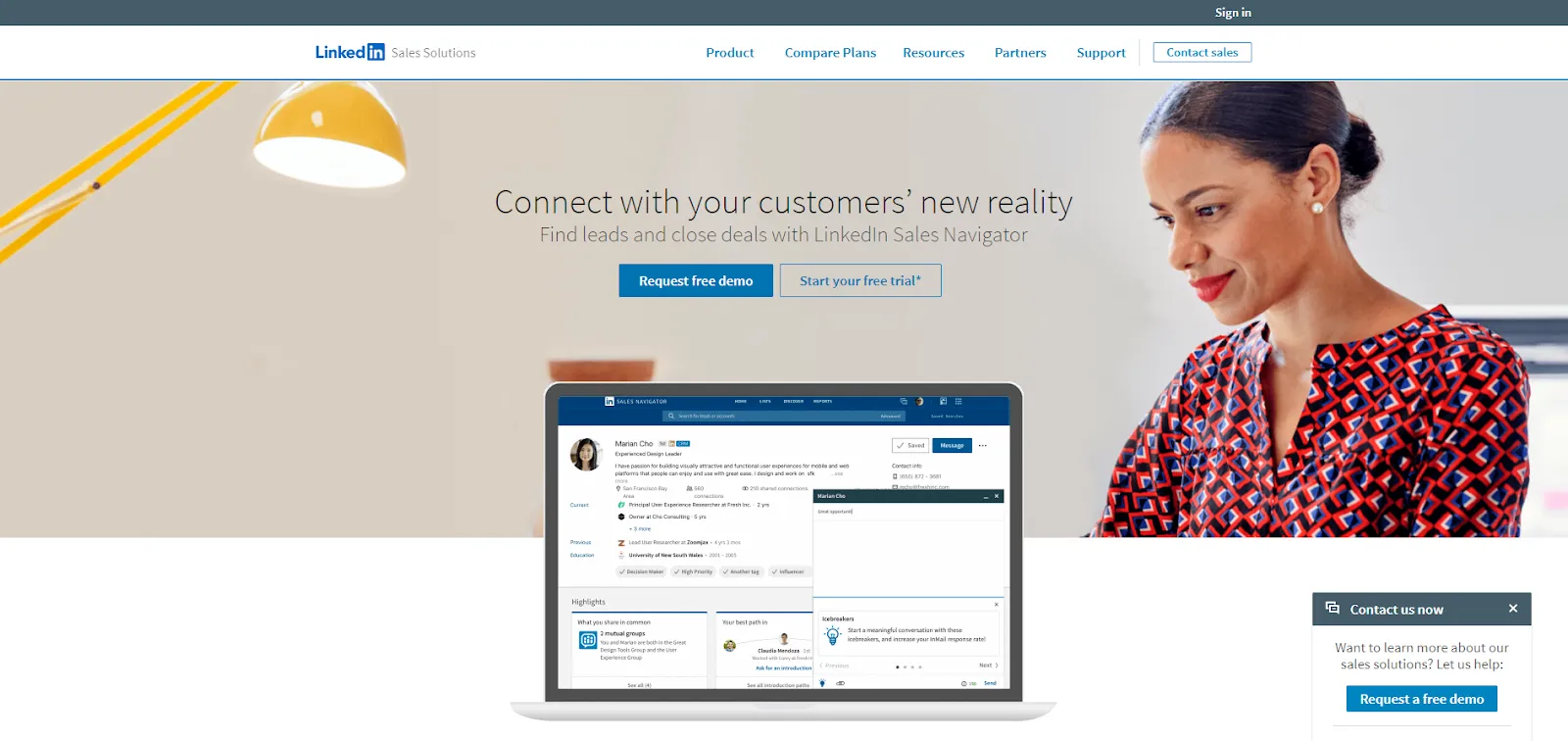
LinkedIn Sales Navigator is a powerful tool that helps you find potential customers.
How to Use LinkedIn Sales Navigator?
- Search for Leads: Use LinkedIn's advanced search to find potential customers based on their job title, industry, and location.
- Save Leads: Save the profiles of potential customers so you can easily find them later.
- Engage with Leads: Connect with potential customers and send them personalized messages.
Example: If you sell software to schools, use LinkedIn Sales Navigator to find school administrators and connect with them.
2. Send Creative Direct Mail
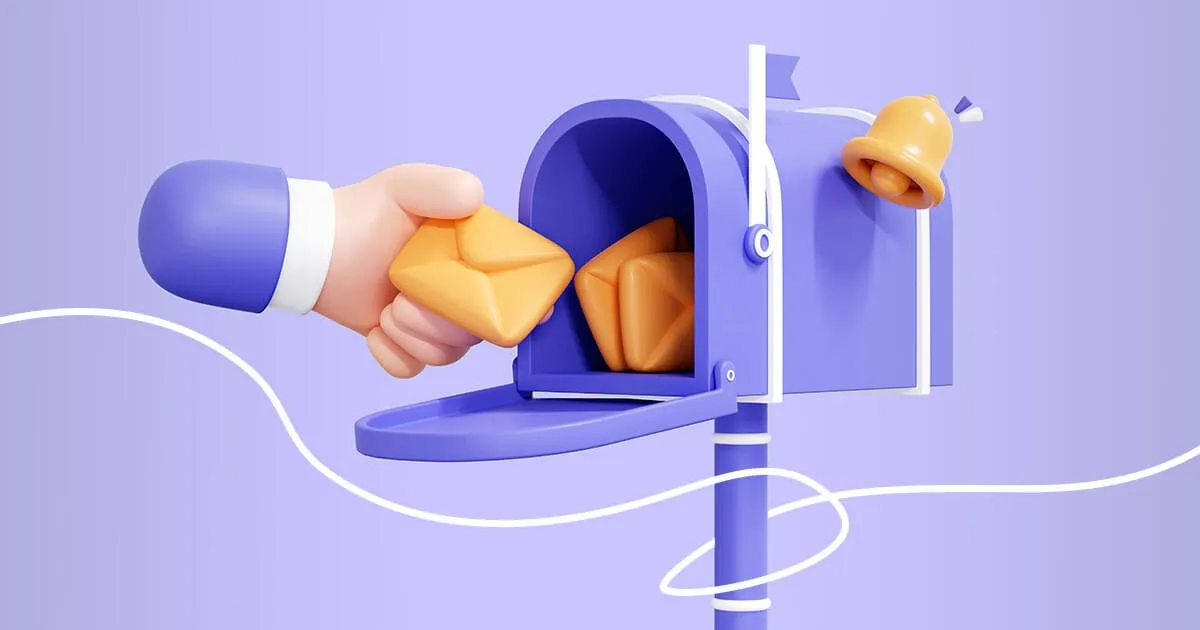
Sending creative direct mail can grab the attention of potential customers.
What is Creative Direct Mail?
Creative direct mail is a physical mail that stands out because of its unique design or content.
How to Send Creative Direct Mail?
- Personalize It: Include the potential customer's name and a personal message.
- Make It Fun: Use colorful designs, interesting shapes, or small gifts to make your mail memorable.
- Include a Call to Action: Encourage the recipient to contact you or visit your website.
Example: Send a small box with a handwritten note and a sample of your product to potential customers.
3. Host Virtual Coffee Chats

Hosting virtual coffee chats is a friendly way to connect with potential customers.
What is a Virtual Coffee Chat?
A virtual coffee chat is an informal meeting over video call where you discuss your product and learn about the customer's needs.
- Schedule a Time: Invite potential customers to a 15-30 minute video call.
- Be Relaxed: Treat it like a casual chat, not a formal presentation.
- Listen and Learn: Ask questions to understand their needs and interests.
Example: Send an email invitation saying, "Let's have a virtual coffee chat to discuss how our product can help you."
4. Create Personalized Video Messages

Personalized video messages can grab attention and make a lasting impression.
How to Create Personalized Video Messages?
- Use Their Name: Start the video by addressing the potential customer by name.
- Be Brief: Keep the video short, around 1-2 minutes.
- Show Enthusiasm: Be energetic and show that you are excited to help them.
Example: Record a short video message saying, "Hi Jane, I noticed your company is growing rapidly. Our software can help manage your projects more efficiently."
5. Utilize Marketing Materials Effectively

Using marketing materials can help you explain your product and attract potential customers.
What are Marketing Materials?
Marketing materials include brochures, flyers, case studies, and infographics.
- Share Digital Copies: Send digital copies of brochures and case studies via email.
- Highlight Key Benefits: Focus on the main benefits of your product.
- Include Visuals: Use images and infographics to make the materials engaging.
Example: Email a case study showing how your product helped another customer with similar needs.
6. Utilize AI-Driven Chatbots

What are AI-Driven Chatbots?
AI-driven chatbots are computer programs that can talk to people online.
- 24/7 Availability: Chatbots can answer questions at any time, even when you're not available.
- Quick Responses: They provide instant replies to customer inquiries.
- Gather Information: Chatbots can collect information from potential customers to help you understand their needs.
Example: Use a chatbot on your website to greet visitors and ask if they need help finding information about your product.
7. Track and Analyze Customer Data
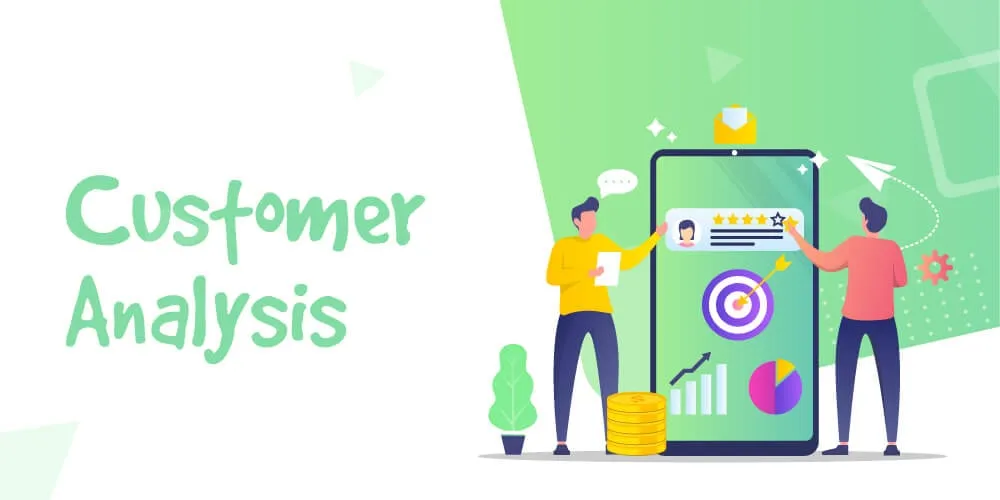
Tracking and analyzing customer data helps you understand your potential customers better.
Why Track Customer Data?
Tracking customer data reveals how potential customers interact with your prospect's business. Begin prospecting with those who show the most interest first.
- Monitor Website Visits: See how many people visit your website and which pages they view.
- Analyze Email Opens: Track how many people open your emails and click on links.
- Understand Behavior: Learn what interests your potential customers the most.
Example: Use tools like Google Analytics to see which pages on your website get the most visits.
8. Launch Interactive Webinars

Interactive webinars are live online events where you can engage with potential customers in real-time.
How to Launch Interactive Webinars?
- Pick a Topic: Choose a topic that interests your potential customers.
- Promote the Webinar: Use social media and email to invite people to join.
- Engage with Participants: Answer questions and encourage participation during the webinar.
Example: Host a webinar titled "How Our Product Can Help Your Business Grow" and answer questions from participants live.
9. Create Educational Content Hubs
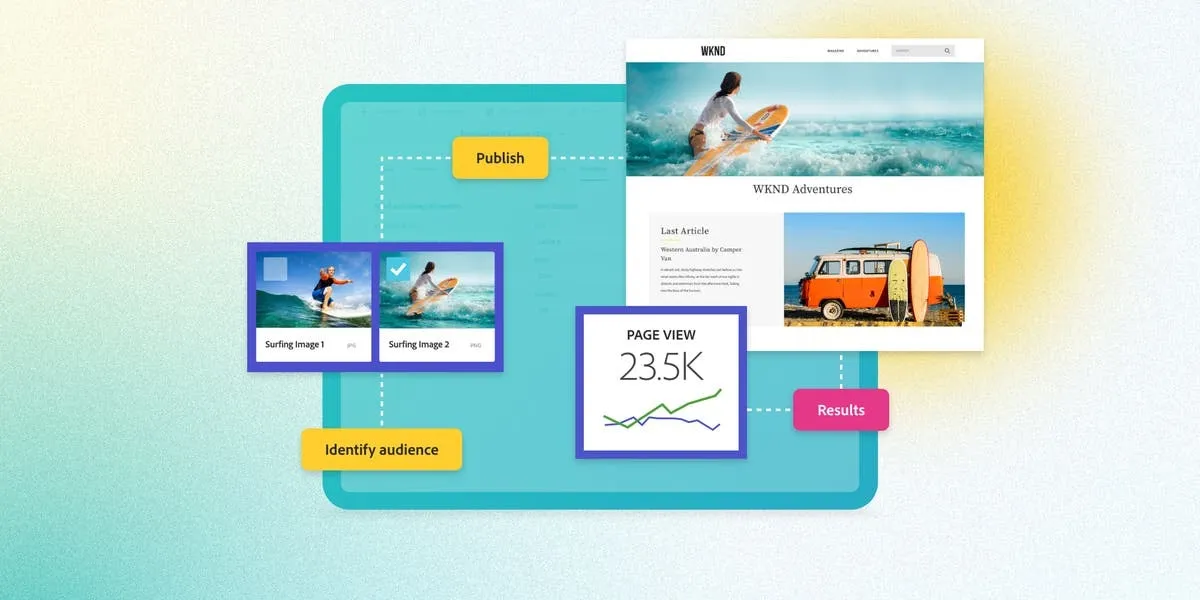
Creating educational content hubs can attract potential customers by providing valuable information.
What is an Educational Content Hub?
An educational content hub is a collection of articles, videos, and resources on a specific topic.
- Choose Relevant Topics: Focus on topics that interest your potential customers.
- Organize Content: Group similar content together to make it easy to find.
- Update Regularly: Keep the content fresh and up-to-date.
Example: If you sell gardening tools, create a hub with articles on gardening tips, videos on tool maintenance, and guides on plant care.
10. Leverage Customer Testimonials in Outreach

Using customer testimonials in your outreach can build trust and credibility.
How to Leverage Customer Testimonials?
- Collect Testimonials: Ask satisfied customers to share their positive experiences.
- Highlight Success Stories: Use stories that show how your product helped solve a problem.
- Include Testimonials in Emails: Add quotes from happy customers to your outreach emails.
Example: Include a testimonial in your email like, "Jane from XYZ Company said, 'This product saved us 10 hours a week!'"
Roles of Sales Reps and Teams in Prospecting
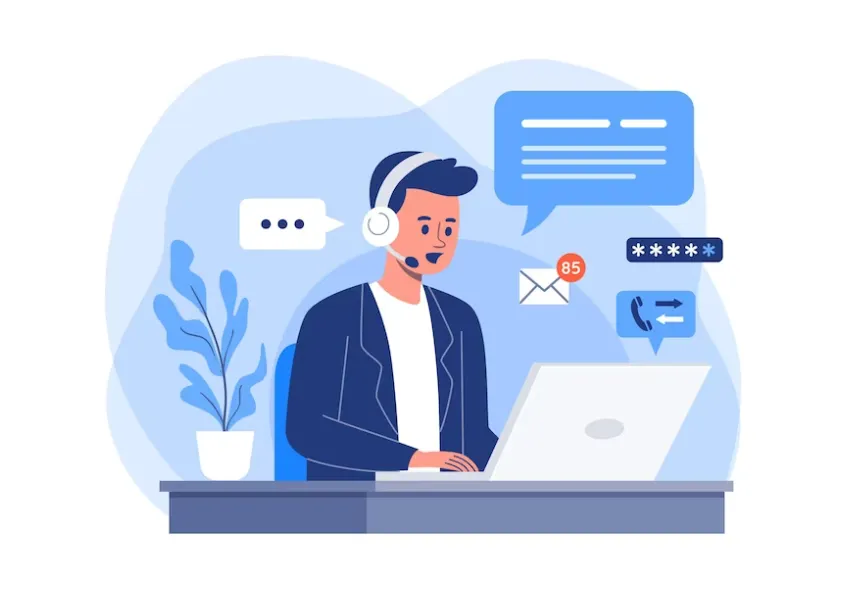
1. Identifying Potential Leads
The first step in any sales cycle or successful prospecting or strategy is identifying potential leads.
What is a Lead?
A lead is someone who might be interested in your product or service.
- Look for Clues: Sales reps search for clues that someone might need what you are selling.
- Use Tools: They use tools like LinkedIn Sales Navigator to find potential leads.
- Check Contacts: Sometimes, potential leads can be found through mutual connections.
Example: A sales rep might notice a company expanding and think they need new office supplies.
According to LinkedIn, sales professionals using LinkedIn Sales Navigator see a 45% increase in sales opportunities.
2. Researching Prospects with Precision
After applying inbound sales prospecting tips and techniques, the next step in outbound prospecting is identifying potential leads. Researching these leads is crucial to begin effective prospecting.
Why Research is Important?
Research helps the entire sales team understand more about the lead’s needs and how to approach them. This includes top-performing sales reps, managers, and other team members.
- Gather Information: Sales reps look for information about the lead’s business and challenges.
- Use Data: They use customer data to learn about past interactions.
- Analyze Competitors: Knowing what competitors offer can help in crafting a better sales pitch.
Example: A sales rep might find out that a lead's company is struggling with time management and pitch a solution that saves time.
Research by Salesforce shows that high-performing sales teams are 2.8 times more likely to use sales analytics.
3. Initial Outreach
Once they have researched, it’s time to cold call for sales team reaches to do the initial outreach.
How to Make Initial Outreach?
Initial outreach is the first contact a sales rep makes with a potential sales lead.
- Personalize Communication: They personalize their message to show they understand the lead’s needs.
- Use Various Channels: Sales reps might use email, phone calls, or social media for outreach.
- Be Helpful: They aim to be helpful and show how their product or service can solve a problem.
Example: A sales rep sends a friendly email saying, "Hi John, I noticed your company is growing fast. We have tools that can help you manage that growth more efficiently."
Email outreach can have a significant impact, with HubSpot reporting that personalized emails improve click-through rates by 14% and conversion rates by 10%.
4. Overcoming Objections
Objections are questions or concerns that potential customers might have about your product or service.
How to Overcome Objections?
- Listen Carefully: Pay attention to what the potential customer is saying.
- Understand the Concern: Try to understand why they have the objection.
- Provide Solutions: Offer answers and solutions to address their concerns.
Example: If a customer thinks your product is too expensive, explain the value and benefits that justify the cost.
According to Gong.io, sales reps who handle objections well can increase their win rates by 32%.
5. Presenting Custom Solutions
Custom solutions are tailored to meet the specific needs of each potential customer.
How to Present Custom Solutions?
- Analyze Needs: Look at the customer's needs and challenges.
- Tailor Your Offer: Adjust your product or service to fit those needs.
- Show Benefits: Clearly explain how your solution will help them.
Example: If a customer needs a faster workflow, highlight features of your product that can speed up their processes.
Salesforce reports that 79% of business buyers say it’s absolutely critical or very important to interact with a salesperson who is a trusted advisor and adds value to their business.
6. Collaborating with Marketing Campaigns
Working with marketing campaigns can help reach more potential customers.
How to Collaborate with Marketing Campaigns?
- Share Insights: Share what you learn from potential customers with the marketing team.
- Align Goals: Make sure your sales goals match the marketing campaigns.
- Use Marketing Materials: Utilize brochures, emails, and social media posts created by the marketing team.
Example: If the marketing or sales team is running a campaign about your product's new feature, use that feature in your sales pitch.
According to Demand Gen Report, aligning marketing and sales teams can help businesses become 67% better at closing deals.
Conclusion
Sales and sales prospecting methods and techniques is the sales process of finding potential customers who might be interested in your product or service. Sales reps play a vital role in this sales process too.
Sales development representatives identify leads, further educate prospects and research prospects, make initial contact, and handle objections. They also present custom solutions to sales prospects and collaborate with marketing campaigns.
To succeed in the sales prospecting process, it's important to listen to customers, understand their needs, and provide solutions. Using tools like LinkedIn Sales Navigator and collaborating with marketing teams can also help.
By following these steps and best prospecting technique, you can improve your sales prospecting efforts and connect with potential customers more effectively. Successful and best sales prospecting tips and techniques can lead to more qualified leads and better sales prospecting results.





.jpg)

.jpg)
